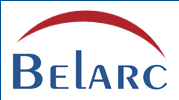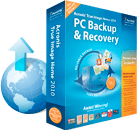|
Top 5 remote working applications |
||||||||
With the UK currently stumbling to a halt due to snow I've been working from home. I like working from home, it has many advantages like the time saved in commuting, and the fact that you usually know your own hardware/software setup better than works.
One thing it has highlighted is that as a software developer your actual location is now totally irrelevant. Even for team based projects you do not all have to be in the same physical location. Our physical and online worlds have become so enmeshed that is it now common place to be able to work productively from anywhere.
So with that in mind I thought I'd do a quick round up of my favourite remote working applications. Some are more "best practices" with recommendations if I've been using a specific product. Warning: all recommendations may contain nuts.
1. Online Code / Asset Source Control
Having your code in an online repository is an absolute life saver. Not only does this contribute towards a "Business continuity" plan for regular working, but it means you can get to it from anywhere. We should all be using source control anyway, but having it online means that it's much more easily maintained and you are not moving code around on USB keys.I use an application called Beanstalk. www.beanstalkapp.com. They have worked well for me so far, and the basic account is free.
2. Virtualisation
The Virtual PC software market has moved on considerably in the last few years. To the point now where there are free versions of virtualisation software that allows you to create virtual pc's inside your actual physical pc. I use this at work and at home for a few reasons. Firstly I don't even have a physical development server anymore, it is a virtual windows 2003 server, and secondly this is great for setting up specific testing environments. Need a windows XP running Internet Explorer 6? Create a new virtual image and install XP, it is far more reliable than multiple IE's or other Internet Explorer emulation software.I use VM ware server 2.0, its totally free (Virtual pc's operating system licences aren't so be careful) you can get it here: http://www.vmware.com/products/server/
3. Instant messaging / Skype
Communication in any team is important, especially so if you are working remotely. If no-one can contact you then appearances may be that you aren't working at all, which is bad news. I use Skype http://www.skype.com/intl/en-gb/ which can be used for chat and messaging.The obvious benefits are that it is free, and means you can have team discussions online. More recently I've encountered several companies that actually use Skype as their main communications tool. They don't even have desktop phones anymore.
4. FTP clients / File synchronisation utilities
Ideally you can still provide any of your in-office functionality at your remote location. So being able to implement change releases is essential. I use a combination of Filezilla http://filezilla-project.org/ which is a free FTP client, and Beyond Compare http://www.scootersoftware.com/ which is a file comparison tool. Ideally I'd like to learn ANT, but just haven't got round to it yet.5. Online file storage
Services like DropBox https://www.dropbox.com/ are invaluable for the online storage of files. We always have online briefs, and Photoshop designs flying around the place, so storing them in one central online location is an ideal way of ensuring that you always have the latest version. It also avoids the problem of not having the project spec, and not being able to work.I personally use Google Docs for this http://www.google.com/docs I've found it to be a very flexible easily maintained way of storing pretty much any format of document.
|
How to remove sshnas.dll trojan (Remove trojan FakeAlert) and msa.exe |
||||||||
So whilst playing with some flash sites I managed to pick up the msa.exe virus, despite having a firewall (hard and soft) antivirus, and anti spyware.
It was the flsh injection virus, and it installed several files into windows 7, and a few sneaky .dll's to try and put it back again. SpyBot search and Destroy will kill it, and so will Microsoft Essentials.
SpyBot search and Destroy
http://www.safer-networking.org/en/spybotsd/index.htmlMicrosoft Essentials
http://www.microsoft.com/Security_Essentials/Alternately follow these instructions, they worked for me.
sshnas.dll is a component of trojan FakeAlert. The trojan come from malicious websites that ask users to download an Adobe Flash Player update or player needed to view a movie online. The filename of the trojan is flash-HQ-plugin. Once started, the trojan will download and install core components: c.exe, msa.exe and sshnas.dll.
When downloaded, it will be configured to start automatically when Windows starts. Trojan FakeAlert may display many popups and fake security alerts, hijack Internet Explorer, disable Windows Task Manager and Registry editor.Also it is usually installed in conjunction with a rogue antispyware programs.
Download OTM by OldTimer from here and save it to desktop. (It looks a bit home made, but it works great.)
Run OTM. Copy, then paste the following text in "Paste Instructions for Items to be Moved" window (under the yellow bar):
2SSHNAS
3
4:reg
5[HKEY_CURRENT_USER\Software\Microsoft\Windows\CurrentVersion\Run]
6"Videohost"=-
7"SSHNAS"=-
8
9:files
10%windir%\msa.exe
11%windir%\system32\sshnas.dll
12%windir%\Tasks\{66BA574B-1E11-49b8-909C-8CC9E0E8E015}.job
13%windir%\Tasks\{35DC3473-A719-4d14-B7C1-FD326CA84A0C}.job
14
15:Commands
16[emptytemp]
17[Reboot]
Click the red Moveit! button. When the tool is finished, it will produce a report for you. Then it will reboot the machine.
|
Recommended Applications - Belarc PC Audit software - Acronis True Image Home 2010 |
||||||||
Every now and then my PC gets a little clunky. Windows will gets a little slower once an installation of it is a bit long in the tooth. One really handy application that a friend recommended to me was Belarc's Personal PC Audit software.
It will create a log of all the applications and serial numbers on your system, which is great if you keep re-installing your operating system (I'm always forgetting which applications I'm running).

Along the same theme Acronis have just released the newest version of their backup software. True Image Home 2010 is Windows 7 compatible, and gives you a wealth of backup options, from full disk images to specific files. What most interests me though is the 'Continuous data protection' option. I've been used to team members working on Macs using 'Time machine' online continuous backup software, and this appears to have very similar functionality.

|
Scotch on the road 2009 - London session |
||||||||
I had the luck last week of attending Scotch on the road 2009 in the SwayBar, London. There were quite a few sessions crammed into the day of talks, some taking a more technical approach, others a little more evangelistic. In this article I'll cover the points that I found of particular interest.
Firstly I was struck by how well the ColdFusion community seems to be doing over the last few years. There were several comments as to how many more developers and companies are now using ColdFusion as a development language. It really is encouraging to see that ColdFusion still has a place in the modern development world.
The overall focus of the sessions this time around was ColdFusion 9. Obviously with a big release arriving Adobe are keen to extol its virtues as much as possible. The major differences appear to be some major performance increases, and several additions to the existing functionality.
ORM (Object Relational Mapping) Is the newly integrated Java Hibernate framework. This is pitched as a way of speeding up development time, and avoiding writing repetitive getters and setters in your CFC's. The Java engine handles the entire database layer and frees the developer up to write the actual functionality, rather than endless SQL scripts. At its most basic it is a way of mapping CFC's using the CFProperty tags to a database schema. It's an interesting methodology that I hope to test out soon. (This is known as 'Active record' in many other languages.)

Solr/Verity/Sphinx - The Verity search index is still present but has taken somewhat of a back seat to the new Solr search index. This was something that really piqued my interest as we currently use Sphinx to create large full text search indexes. There are murmurings that that there are some performance differences between Verity and Solr, but it would also be very interesting to see Sphinx thrown into the mix. At some point I hope to run some comprehensive tests against the three to see their performance differences under load.
There has been an interesting change to the Eula this time around too. It isn't something that most people look at, but the licensing model has changed slightly. You can now reuse your ColdFusion 9 license on a non production server. This means that it is very cost effective in upgrading your staging or failover servers, as they can use the same license as your live servers. (For legal reasons don't take my word as gospel, this is how I understood Claude Englebert's presentation on it.)
Another very interesting feature of ColdFusion 9 is its ability to expose a lot of its functionality as external API's. You can now expose specific functions of the server, and it is only a slightly different syntax from the traditional cfml code:
2 from="mary.jane@damselInDistress.co.uk"
3 subject="Rescue me please" />
4
5<cf:Mail to="peter@parker.com"
6 from="mary.jane@damselInDistress.co.uk"
7 subject="Rescue me please" />
Overall it was a very informative and thought provoking seminar. Fuzzy orange are to be commended on putting on a great day. I'd highly recommend any of their future events, not just for ColdFusion based developers, but for Adobe affiliates in general.








